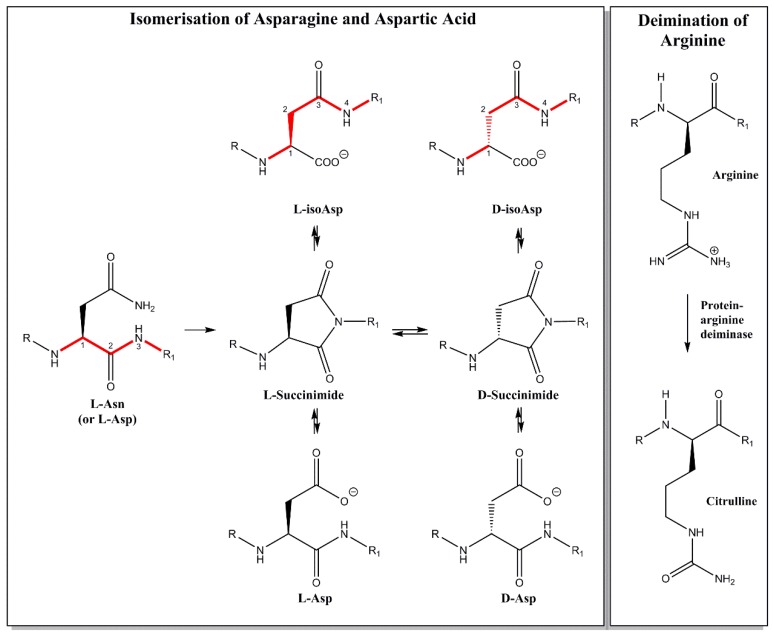Figure 1.
When old proteins in the body degrade, novel structures are formed. l-Asp and l-Asn residues can spontaneously convert over time to 4 isomeric forms, via a cyclic intermediate as illustrated. An uncharged Asn becomes a mixture of four negatively charged Asp residues. Probably of greatest impact as potential immune inducers are l-isoAsp and d-isoAsp. In the case of d-isoAsp the α-carbon is racemised and the polypeptide chain is also extended by the insertion of a CH2 group, as highlighted by the red bonds. In adult MBP, many positively charged Arg residues have been converted to neutral citrulline residues. Together these abundant post translational modifications (PTMs) lead to protein unfolding and the generation of novel antigens.

